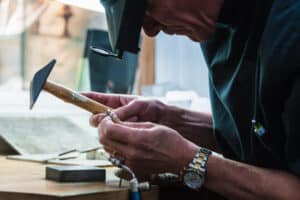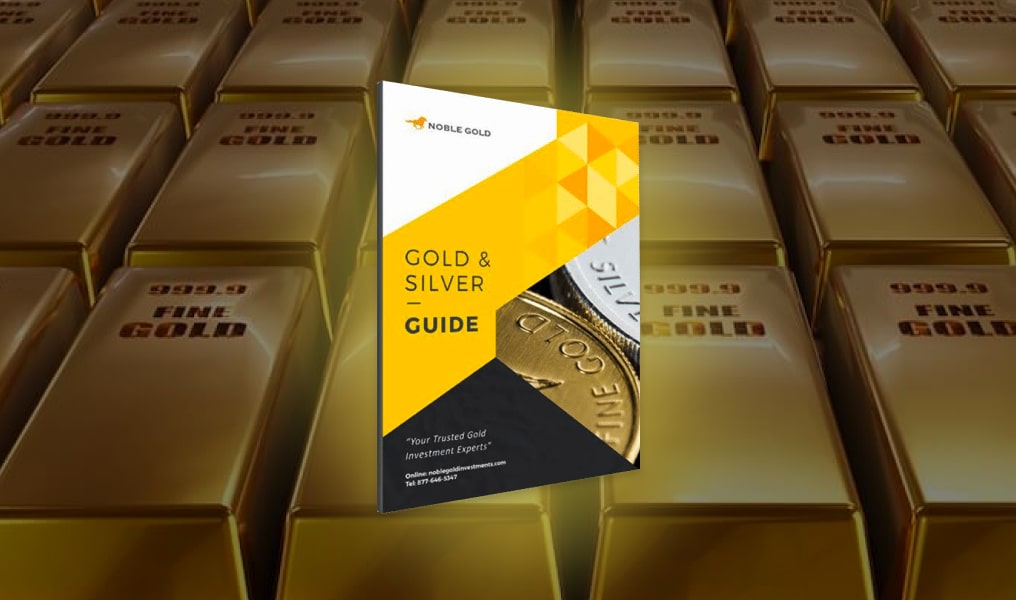Coin collecting, often referred to as “The Hobby of Kings,” was originally a popular pastime among the nobility, royalty, and the world’s elite. Roman Emperor Augustus Caesar (b. 63 BCE) famously collected Ancient Greek gold coins and gave them to his honored generals. He may have been the first known numismatist, but he certainly wasn’t the last.
These days, thanks to the internet and reliable coin-grading services, collecting coins isn’t just for the rich and powerful. For some, coin collecting has become an exciting hobby, while others view coin collecting as a long-term investment opportunity.
Like with any investment, you’ll want to do your research to make sure that your money is secure and the opportunity isn’t a scam. Luckily, when it comes to investing in coins, there are a few coin grading services that take the guesswork out of it for you.
How Is A Coin Graded?
When a coin is “graded,” an expert examines it to determine its age, authenticity, rarity, and condition, all of which must be considered before determining its value.
Having a coin graded by an unbiased third party ensures that both the buyer and seller know the coin’s actual value and can negotiate a fair price.
A coin’s grade is generally determined by six criteria: strike, preservation, luster, color, attractiveness, and where they were minted.
Strike refers to the minting process used to strike a planchet into a coin. There are three basic strike types: Circulation Strike, Proof Strike, and Special Mint Strike (SMS).
A coin’s level of preservation is how well it has stood the test of time. It is very easy for coins to be corroded or for the relief to wear down over time, especially ones that have been in circulation.
Luster refers to a coin’s reflective qualities, which come from microscopic striations formed during minting. These invisible striations reflect light off the coin’s surface in a unique pattern, are easily damaged, and are impossible to forge.
Color, or toning, refers to whether or not the coin has changed color due to oxidation or tarnishing.
Attractiveness is subjective and self-explanatory.
The Different Grades For Coins
Numismatist Dr. William Herbert Sheldon developed the current system used for grading coins in the US, and so it is known as the Sheldon Coin Grading Scale. He originally included the Scale in his 1948 book, Penny Whimsy.
The Sheldon Scale gives coins numerical grades of 1-70. On the Sheldon scale, a coin with a grade of 70 will hold a value approximately 70 times higher than a coin with a grade of 1.
Grades 1-58 apply to coins that have been in circulation, and grades 60-70 are used for coins that have never been circulated.
- Poor
Coins where the relief has been worn smooth, and badly corroded coins are considered Poor Grade. - Fair
Type and date are discernible, but barely and the coin is damaged or worn. Major details are usually indiscernible. - About Good
Type and date can be determined, though some spots may be worn. - Good (G)
Primary features are generally evident as outlines, but the coin is still heavily worn down. - Good – Plus (G+)
Full rim, major devices are easily identified, and the coin’s features are clearly outlined. - Very Good (VG)
Intact rim with clearly discernible features and devices. Readable, but still significantly worn. - Fine (F)
Clear devices show some detail, but the whole coin is evenly worn to a moderate degree. - Very Fine (VF)
This coin is clearly readable but lightly worn. The devices should have good detail and clean rims, and the whole coin shows moderate wear on high points and minor wear below. - Good Very Fine (VF)
Clear legends and devices show all detail with very little wear. The high points of the coin’s design are only slightly worn. - Extremely Fine (XF)
Sharp legends, clear devices with slight wear on high points. - Choice Extremely Fine (XF)
Sharp devices and legends, with only slight wear on high points. Great eye appeal. - About Uncirculated (AU)
Only the most minimal wear on the highest points of the coin. Sharp devices, legends, and some mint luster must remain. - Good About Uncirculated (AU)
This coin has excellent eye appeal, with no more than a hint of wear on the coin’s high points. Original mint luster must remain on at least half of the coin. - Choice About Uncirculated (AU)
It appears almost uncirculated with no more than minor wear on high points. Nearly all the mint luster must remain, and the coin must have outstanding eye appeal. - 60 – 70. Mint State Basal (MS)
Mint State coins have no traces of wear and are graded on their quality and attractiveness. - Mint State 60 (MS60)
No wear, but this coin may be dull, washed out, or unattractive. The coin may be dinged, scratched, or scuffed. Copper coins may be dark or have spots. - Mint State 61 (MS61)
This coin may have minor nicks, striking, or planchet defects. Luster may be impaired or diminished. - Mint State 62 (MS62)
Luster may be dull or impaired. It may have slight scuffs and nicks, though eye appeal is generally acceptable. Copper coins show a diminished tone or color. - Mint State 63 (MS63)
This coin is slightly impaired mint luster, and minor defects and marks may be present throughout the design or in the fields. The quality is generally average, but the coin is attractive overall. - Mint State 64 (MS64)
This coin should have good overall luster and even mint strike. Minor contact marks may be present, and small patches of hairlines may show under low (x3-4) magnification. Pleasing eye appeal. Slight dullness allowed. - Mint State 65 (MS65)
This coin is attractive and shows a relatively high quality of luster and strike, based on the date and originating mint. Minor hairlines may show under medium (x5) magnification. The coins should be pleasing to the eye with overall above-average quality. Copper coins have full luster. - Mint State 66 (MS66)
Full original mint luster with no more than two or three minor contact marks. Very light hairlines may show under (6x+) magnification. The coin should have above-average eye appeal, must be attractive for the date and originating mint. Copper coins have no more than light toning. - Mint State 67 (MS67)
Sharp strike with full, original mint luster. No more than one or two minor single hairlines may show under (6x+) magnification or one or two partially hidden scuff marks. Exceptional eye appeal. Copper coins have their original color and high luster. - Mint State 68 (MS68)
Full original luster and sharp strike. No hairlines, but very few flaws or scuffs may be present. This coin should display exceptional eye appeal. Copper coins have their original color and high luster. - Mint State 69 (MS69)
This coin should display full original luster and sharp strike. No hairlines, no more than two minor non-detracting contact marks or flaws. Eye appeal is exceptional. - Mint State 70 (MS70)
The coin is perfect as minted and has no trace of wear, handling, or contact with other coins. No flaws under (5x) magnification, and the eye appeal is exceptional. Almost no older coins of this grade exist.
The Best Coin Grading Services
Whether you are thinking of starting a coin collection or have one you’d like to sell, your first step should be to have your coins graded. A coin grading service can give you the information you need to ensure you get the best return on your investment.
Graded coins are also “slabbed” or encapsulated in plastic. This protects them from handling and natural environmental wear. Once a coin’s grade has been determined, it can be appraised and assigned a value.
Buying graded coins ensures that you’re getting what is advertised and paying a fair price. If you own ungraded coins that you believe to be valuable, here are five excellent coin grading services you could send your coins to for grading.
Numismatic Guaranty Corporation (NGC)
Numismatic Guaranty Corporation began providing coin grading services in 1987. NGC is the official grading service of the ANA (American Numismatic Association) and has been since 1995.
NGC’s Walkthrough service tier grades any coins from the US or abroad. Their fees are on a sliding scale, based on the determined value of the coin. For example, if your coin appraises at $25,000 or less, you will not be charged more than $175 for this service. If the coin’s value exceeds $25,000, the service fee is $300 + 1% of the coin’s value according to their price guide.
NGC is highly regarded in the industry, and its association with ANA helps ensure that the coins it grades command good market value. However, some coin owners avoid using NGC because you must purchase a membership to use their coin grading services.
Professional Coin Grading Service (PCGS)
PCGS began operations in 1985 and pioneered the practice of protecting appraised coins in tamper-evident capsules to guarantee their grading.
PCGS’s walkthrough service tier will grade coins with a value up to $100,000 and charge you up to $150, depending on the coin’s value. Once your coin is valued at more than $100,000, the pricing switches to $300 + 1% of the coin’s value.
If you suspect the value of your coin is between $25,000 and $100,000, it makes more sense to have it graded by PCGS than NGC. However, like NGC, you must purchase a membership to have your coins graded.
Independent Coin Graders (ICG)
ICG opened its doors in 1998, making it one of the newer grading services. They grade coins, tokens, and medals, both from the United States and around the world. ICG was founded on the belief that graders should be as objective as possible when looking at a coin and that the coin’s ownership shouldn’t influence the coin’s grade.
ICG is known for its quick turnaround time, and unlike NCG and PCGS, ICG does not require you to pay a membership fee to submit coins for grading. On the downside, ICG is not as popular as PCGS and NCG, so the grading may not be as widely accepted.
ANACS
ANACS, America’s oldest coin grading service, began operations in 1972 as a service provided by the American Numismatic Association to combat an urgent problem in the coin industry. The ANA, like the U.S. Olympic Association and the American Red Cross, is chartered by the U.S. Congress. It was the first widely recognized coin grading service.
ANACS will grade any type of coin and does not require a membership to have your coins graded. ANACS services are also very competitively priced as they are a not-for-profit educational association. However, they can be tougher on grading than NGC or PCGS and will typically take a bit longer than both services.
Sovereign Entity Grading Service (SEGS)
SEGS is a coin grading service that has been around for many years and is reasonably well-known in the industry. While they offer complete attribution and designation options, some coin owners believe their grading may be slightly more liberal than some of the competition.
SEGS is well known for their unique Slab capsule that they call the “best and most innovative” coin holder in the industry. The coin holder is so unique that SEGS was able to secure a U.S. Patent to protect it.
The SEGS slab is specifically designed so that the coin remains perfectly still once it is in place. It is also chemically inert, so for these reasons, it does a fantastic job of protecting the coin from mechanical and chemical damage. As far as preservation, SEGS cases are the best.
However, coin collectors complain that the SEGS cases are nearly impossible to open, so SEGS-graded coins do not have as high a market value as NGC or PCGS-graded coins. SEGS is an excellent choice if you are a collector and your main goal is preserving your coins. If you’re looking to actively buy and sell your coins, having them graded by SEGS may create unnecessary complications.
Buy Gold & Silver Coins At SpaceX Gold
Coin collecting is an exciting hobby that allows you to hold a piece of history in your hand while also investing for your future. Investing in coins can also insulate you from market fluctuations that negatively affect paper assets like stocks and bonds.
If you’re thinking about buying rare coins or investing coins in a precious metals IRA, SpaceX Gold can help you start your journey. All coins sold by SpaceXgold are certified and independently graded by the Professional Coin Grading Service (PCGS) or the Numismatic Guaranty Corporation (NGC), which ensures quality and compliance with the Sherman scale.
When you purchase gold and silver coins at SpaceX Gold, you can take delivery of your physical coins or store them in our secure depository. We carry a wide range of gold and silver coins, including American Gold Eagle Coins, Canadian Gold Maple Leaf Coins, Australian Gold Kangaroo Coins, and more.
You can click here to open an account today to start buying gold and silver coins at your convenience. If you’d like to learn more about our coins, our services, or how you can invest rare coins in an IRA, call us at (877)646-5347 to talk to one of our experienced team members.






